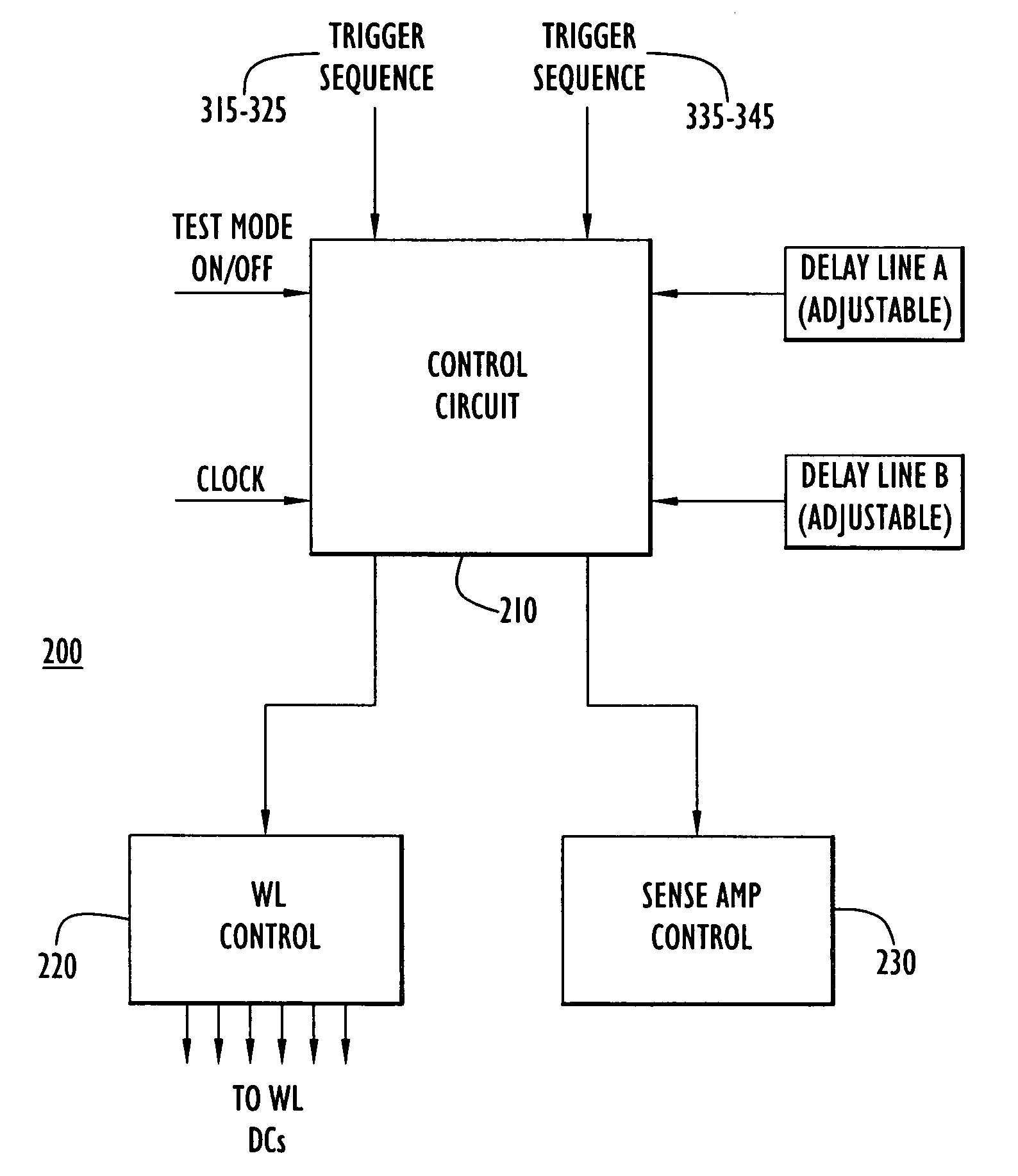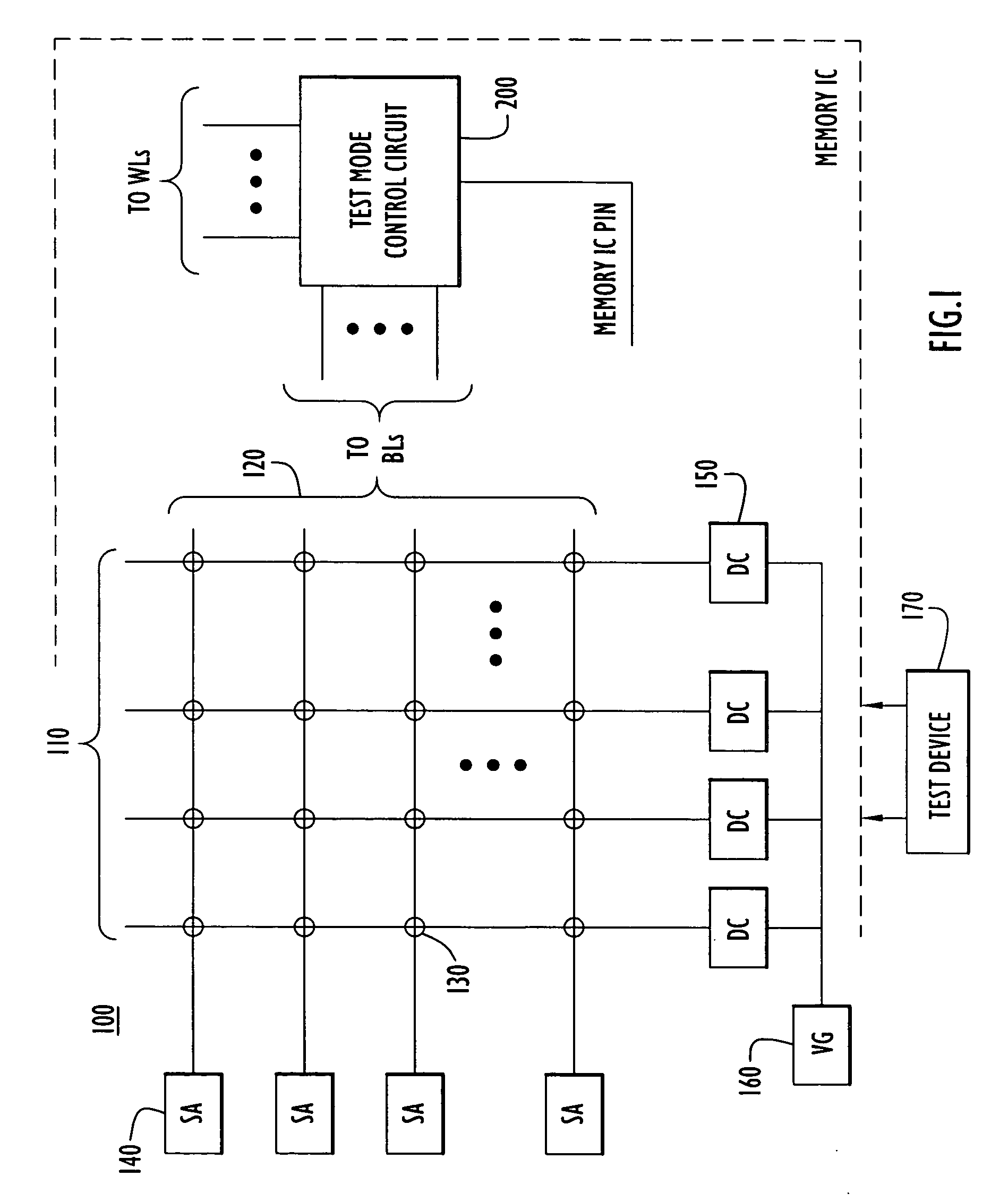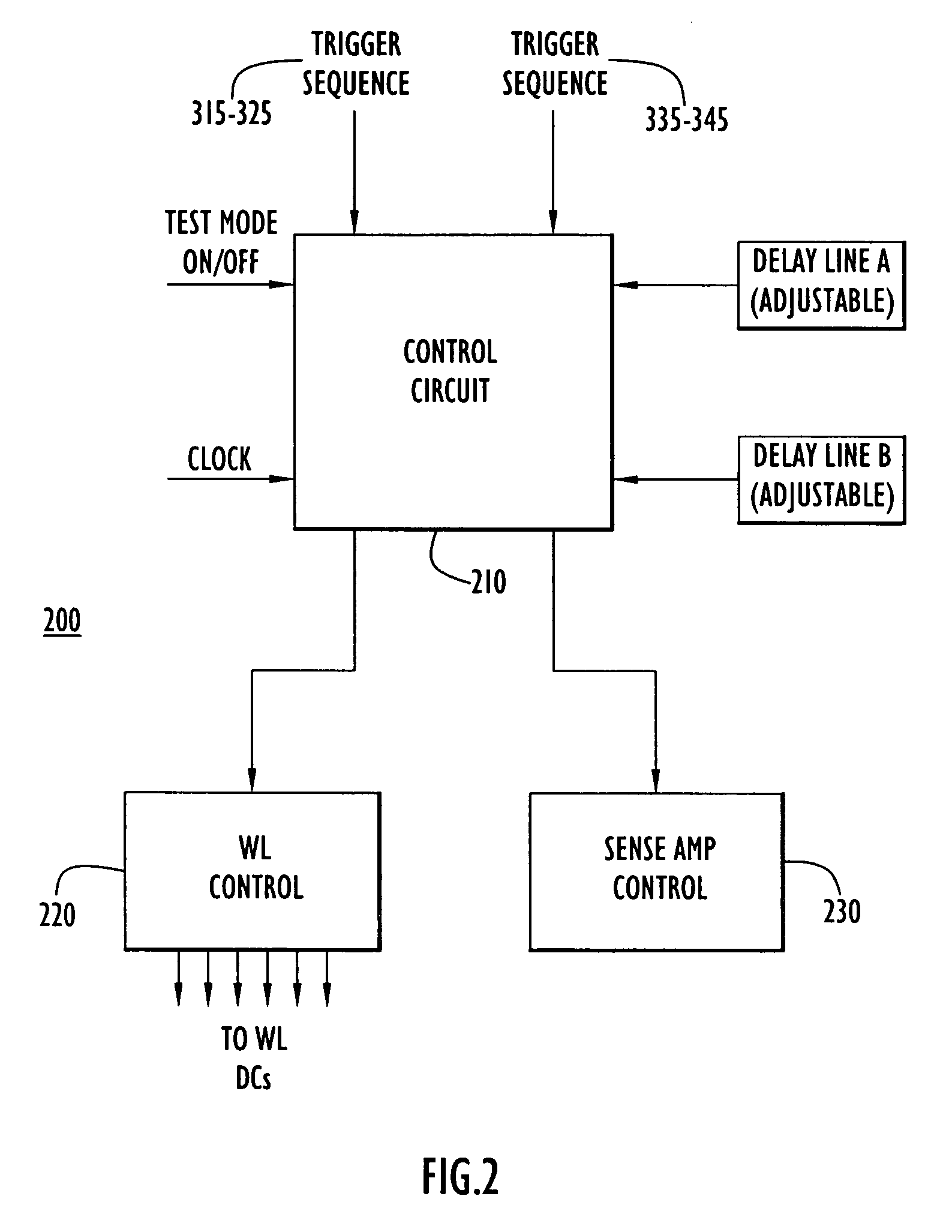Test method, control circuit and system for reduced time combined write window and retention testing
a control circuit and write window technology, applied in the field of reducing time, can solve problems such as loss of retention time, defects may occur, and further complicated wordline/bitline architectures
- Summary
- Abstract
- Description
- Claims
- Application Information
AI Technical Summary
Benefits of technology
Problems solved by technology
Method used
Image
Examples
Embodiment Construction
[0013] Referring first to FIG. 1, a portion or bank of a memory array is shown at reference numeral 100 that would be contained in a memory integrated circuit (IC) represented by the dotted line, such as a dynamic random access memory (DRAM) IC. There are a plurality of wordlines (WLs) 110 and a plurality of bitlines (BLs) 120 in a bank 100, and a plurality of banks in a memory IC. In a bank, the WLs 110 and BLs intersect at storage cells 130. There are many array configurations that are possible, and the test mode procedures described herein are not limited to the configuration shown in FIG. 1. Associated with the BLs 120 are sense amplifiers (SAs) 140. Associated with each WL are driver circuits (DCs) 150 that are used to activate and deactivate a corresponding WL. A voltage generator (VG) or source 160 is provided to supply the necessary voltages to activate and deactivate the WLs 110. Depending on some implementations, more than one VG may be needed for all of the WLs in a memor...
PUM
 Login to View More
Login to View More Abstract
Description
Claims
Application Information
 Login to View More
Login to View More - R&D
- Intellectual Property
- Life Sciences
- Materials
- Tech Scout
- Unparalleled Data Quality
- Higher Quality Content
- 60% Fewer Hallucinations
Browse by: Latest US Patents, China's latest patents, Technical Efficacy Thesaurus, Application Domain, Technology Topic, Popular Technical Reports.
© 2025 PatSnap. All rights reserved.Legal|Privacy policy|Modern Slavery Act Transparency Statement|Sitemap|About US| Contact US: help@patsnap.com



